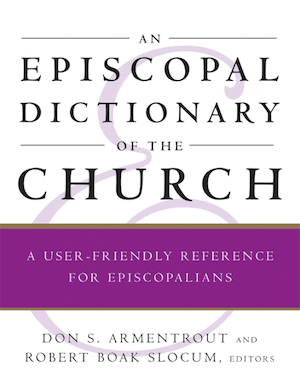Glossary of Terms
Valle Crucis, North Carolina
In 1842 Bishop Levi S. Ives of North Carolina decided to form a religious community in North Carolina on the model of the one that was beginning in Nashotah, Wisconsin. […]
Vaughan Williams, Ralph
(Oct. 12, 1872-Aug. 26, 1958). English composer, hymn writer, and editor. He was born in Down Ampney, Gloucestershire. Williams was educated at Charterhouse, The Royal College of Music, and Trinity […]
Veil
1) A square cloth that covers the paten and chalice until preparation of the altar for communion. The veil usually matches the vestments and altar hangings in the liturgical color […]
Veil of the Temple
In the Jerusalem Temple, the veil or curtain of the temple was at the entrance to the most holy place (see Ex 26:33, 35:12, 39:34; 2 Chr 3:14). It has […]
Venerable
1) The title of address for an archdeacon. It is abbreviated The Ven. 2) In the Roman Catholic Church, a deceased person may be declared venerable in the first main […]
Venerable Society, The
See Society for the Propagation of the Gospel in Foreign Parts (SPG).
Veneration
The reverence or honor paid by Christians to saints, crosses, altars, images, etc. Veneration is distinguished from the absolute worship that is due to God alone. Various Puritans and iconoclasts […]
Veneration of Saints
Christians began to honor their departed heroes of the faith as early as the second century. After Polycarp, Bishop of Smyrna, was martyred in about 155, his ashes were gathered […]
Veneration of the Cross
The earliest description of this ceremony is found in the late fourth century treatise “The Pilgrimage of Egeria.” In this diary she describes the Good Friday ceremonies in Jerusalem. During […]
Veni Creator Spiritus
The opening line of a medieval Latin hymn, “Come, Creator Spirit,” usually ascribed to Rabanus Maurus (776-856). It appears in The Hymnal 1982 in three different translations (Hymns 500-504). It […]
Veni Sancte Spiritus
The opening words of the medieval Latin Golden Sequence, “Come Holy Spirit,” sung before the gospel on Pentecost. It is considered a masterpiece of Latin sacred poetry and has been […]
Venice Statement
This agreed statement on Authority was finalized by the Anglican-Roman Catholic International Commission (ARCIC) at Venice in 1976. It was eventually included within the ARCIC Final Report (1982). It said […]
Venite, The
Invitatory psalm based on Ps 95:1-7. It begins, “Come, let us sing to the Lord; let us shout for joy to the Rock of our salvation” (BCP, p. 44-45, 82). […]
Venture in Mission (VIM)
The 1976 General Convention resolved to issue a call to the church to work and pray for a “Venture in Mission” to provide mission development funding for the national church. […]
Verbal Inspiration
The belief that the individual words and even verbal relationships of the Bible were inspired by God. Some would make a distinction between the words themselves and the ideas expressed […]
Verge
See Verger; see Virge.
Verger
A lay minister who assists the clergy in the conduct of public worship, especially in the marshaling of processions. Vergers may be full-time or part-time, paid or volunteer. The history […]
Vermont, Diocese of
On Sept. 20, 1790, the Diocese of Vermont was organized at Arlington. On May 29, 1810, representatives from Vermont and four other New England dioceses met in Boston and organized […]
Vernacular
A language that is commonly spoken in a locality, the native language of a place. In the early church, the vernacular was used as the language for Christian liturgy. However, […]
Versicles and Responses
Short sentences, often drawn from the Psalter, that are said or sung antiphonally in worship. Typically the versicle is said or sung by the officiant or celebrant, with the response […]
Glossary definitions provided courtesy of Church Publishing Incorporated, New York, NY,(All Rights reserved) from “An Episcopal Dictionary of the Church, A User Friendly Reference for Episcopalians,” Don S. Armentrout and Robert Boak Slocum, editors.

